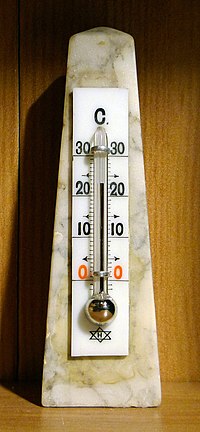
Photo from wikipedia
Quantitative and non-invasive temperature mapping using magnetic resonance imaging (MRI) provides a unique way to measure temperature evolution inside biological tissues. The method is widely used in thermal ablation procedures… Click to show full abstract
Quantitative and non-invasive temperature mapping using magnetic resonance imaging (MRI) provides a unique way to measure temperature evolution inside biological tissues. The method is widely used in thermal ablation procedures with magnetic fields at or below 3T. In this paper, the sensitivity of the MRI thermometry at 7T was studied using a proton resonance frequency (PRF)-based technique. We first used an agarose gel phantom with MR-compatible thermometry to calibrate the temperature coefficient, and then this temperature coefficient was employed to measure the internal temperature in both ex vivo (beef muscle) and in vivo (rat) experiments using focused ultrasound heating. The temperature coefficient calibrated by the phantom was 0.0095 ppm/°C, and both the ex vivo and in vivo experiments exhibited clear temperature evolution. This quantitative study confirmed the sensitivity (<1 °C) of MR temperature mapping at 7T.
Journal Title: Quantitative imaging in medicine and surgery
Year Published: 2017
Link to full text (if available)
Share on Social Media: Sign Up to like & get
recommendations!